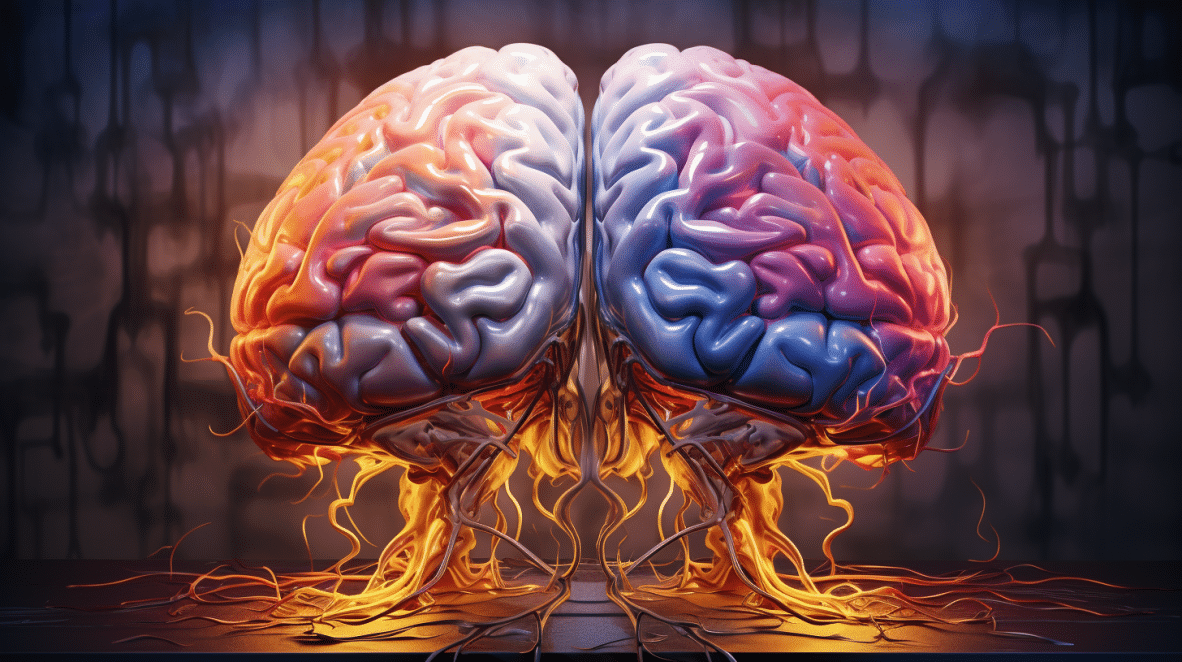Human intelligence has long fascinated scientists.
With modern neuroimaging methods like MRI, we now have an unprecedented ability to examine the biological basis of intelligence in the living brain.
Key Facts:
- Larger brain size predicts greater intelligence, but regional brain volumes matter more than total size.
- More intelligent individuals tend to have greater volumes in frontal, temporal, parietal and occipital lobes.
- Cortical thickness, tissue composition and convolution patterns also correlate with IQ.
- The corpus callosum facilitates communication between hemispheres and relates to intelligence.
- MRI reveals intelligence’s correlates, but we need multi-modal imaging to elucidate mechanisms.
Source: Intelligence
MRI Neuroimaging & Intelligence Findings
For centuries, philosophers and scientists have pondered the biological essence of human intelligence.
With the advent of modern neuroimaging technologies like MRI, we can now visualize intelligence’s imprint on the living brain.
This review summarizes key MRI findings linking brain structure to intelligence.
While early efforts examined brain weight post-mortem, MRI enables inference on far larger samples.
Most studies reveal significant positive correlations, with more intelligent individuals having larger regional brain volumes, greater cortical thickness, more optimal tissue composition, and more convoluted cortices.
The corpus callosum also positively relates to intelligence, presumably by enabling efficient communication between hemispheres.
Together, these findings confirm neurobiological correlates of intelligence.
However, we need multimodal imaging and cross-disciplinary research to elucidate the mechanisms relating physical brain characteristics to cognitive performance.
Global Brain Size Matters, But Regional Volumes Matter More
Total Brain Volume Positively Relates to Intelligence
Larger brains predict greater intelligence. Studies relating head size to intelligence found modest correlations.
More recent MRI studies reveal ~0.3-0.4 correlations between total brain volume (TBV) and IQ, confirming the overall positive link.
Physically larger brains likely have greater information processing capacity.
However, while TBV correlates positively with intelligence, effect sizes are modest, suggesting other factors also play a role.
Regional Brain Volumes Have More Specific Relationships
If all brain regions contributed equally to intelligence, controlling for TBV would abolish regional volume-IQ relationships.
However, regional volumes correlate with IQ even after controlling for TBV.
This indicates localized effects, with volumes of specific structures selectively relating to cognitive abilities.
Frontal, temporal and parietal lobes, the hippocampus and cerebellum are most frequently implicated.
These regions likely support verbal, visuospatial, memory and executive demands important for intelligence tests.
However, regional correlations are modest, suggesting size alone does not determine cognitive performance.
Underlying cytoarchitecture likely also matters.
Cerebral Cortex: Thickness, Tissue and Folding

The cerebral cortex contains over two-thirds of the brain’s neurons. Its structural features likely contribute to intelligence differences.
Cortical Thickness Positively Correlates with IQ
Few studies have examined cortical thickness-IQ links.
Shaw et al. (2006) found no significant relationship in childhood and adulthood.
However, Narr et al. (2007) revealed prominent positive correlations in prefrontal and temporal cortices in adults.
Thicker cortices may have greater neuron densities or more robust dendritic arborization.
However, underlying mechanisms remain speculative.
Intelligent Individuals Have More Optimal Tissue Composition
Higher IQ individuals tend to have greater gray matter, reflecting greater neuron quantities.
However, more gray matter may not necessitate more neurons.
Smarter people may use neurons more efficiently, evidenced by lower brain metabolism during cognitive tasks.
White matter also positively correlates with IQ, likely reflecting axon caliber and myelination optimizing conduction velocity.
However, regional specificity and causality remain unclear.
Cortical Convolution Patterns Relate to Cognitive Abilities
The degree of cortical folding may support advanced cognition.
Humans have more convoluted cortices than less intelligent primates.
Focusing on highly localized cortical curvature, positive links emerged between gyrification and IQ in left temporo-occipital areas.
More folded cortices may reflect denser neural interconnectivity benefiting performance.
However, cytoarchitectural bases are still unknown.
The Corpus Callosum (CC): Connecting Hemispheres
The corpus callosum (CC) contains over 200 million axons transferring higher-order cognitive information between hemispheres.
Its size indicates communication capacity.
Larger CC Area Correlates with Higher IQ
Studies frequently report positive links between CC size and cognitive performance, leading to assumptions that larger CCs enable more efficient inter-hemispheric transfer benefiting problem-solving.
Recent localized thickness measurements provide further support, revealing significant correlations in posterior CC sections.
Here, correlated cortical areas likely participate in complex visual processing.
CC Links Elucidate Distributed Networks Underlying Intelligence
The CC findings exemplify that intelligence depends on networks spanning anterior and posterior brain regions.
No single structure or lobule can account for IQ.
This aligns with the Parieto-Frontal Integration Theory highlighting integration of sensory, association and executive processes.
Future Research: Multimodal Imaging for Mechanistic Insights
MRI reveals macroscopic correlates of intelligence, but we need multimodal imaging to elucidate neural mechanisms.
Combining structural MRI with fMRI could link regional volumes to functional activations during cognitive tasks.
Diffusion tensor imaging could relate white matter integrity to metabolism using MRS.
Finally, imaging genomics could uncover common genetic determinants of brain structure and cognitive function.
Such multidisciplinary approaches promise continued advances in unraveling the biological foundations of human intelligence.
Conclusion: Neuroimaging to Determine IQ
Modern neuroimaging enables unprecedented insights into intelligence’s structural correlates within the living brain.
Overall, findings indicate that greater regional brain volumes, cortical thickness, gyrification and white matter connectivity correspond to heightened cognitive performance.
However, observed effects are generally modest and mechanisms unclear.
Truly elucidating how physical brain characteristics support intelligence will require cross-disciplinary research combining structural brain imaging with functional, metabolic, genomic and other modalities.
Still, our ever-growing understanding of intelligence’s biological substrate promises to enlighten enduring mysteries of the mind-brain connection.
References
- Study: Neuroanatomical correlates of intelligence
- Authors: Eileen Luders et al. (2009)







